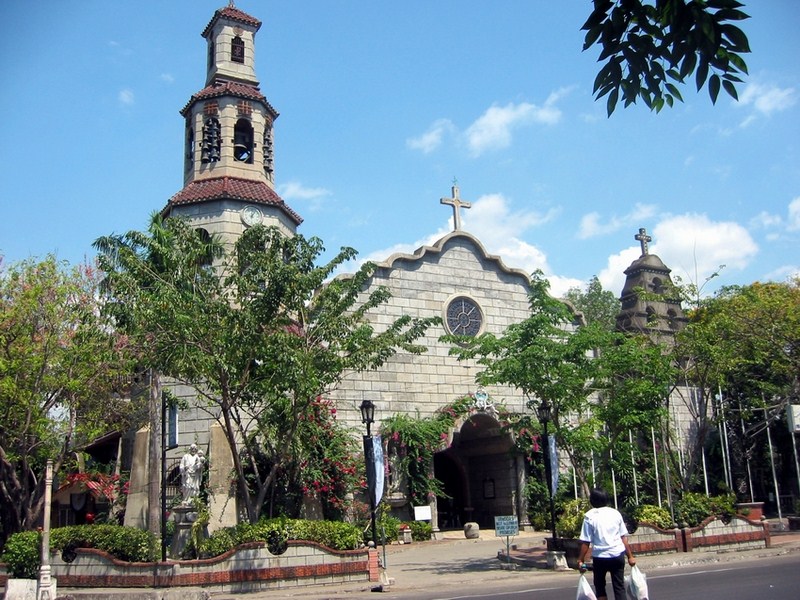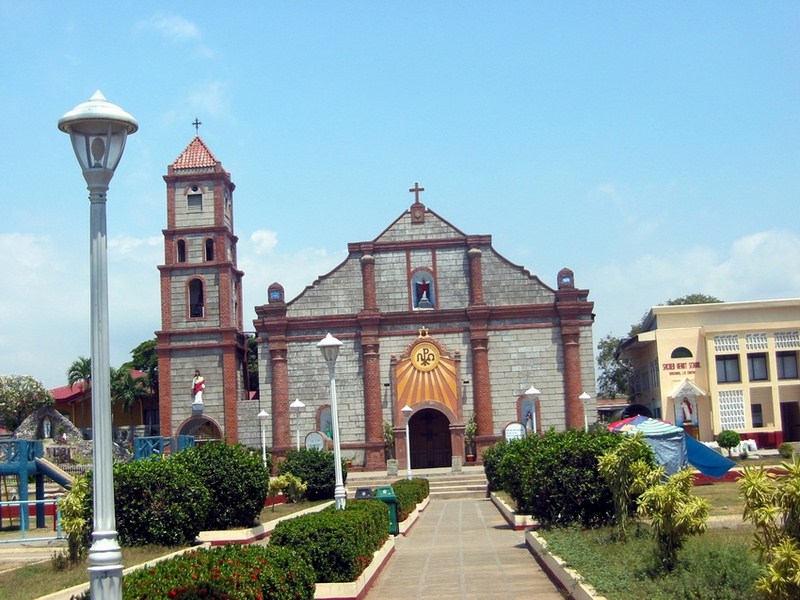While driving along the Alabang-Zapote Rd. in Las Pinas City with Jandy, I decided, on a whim, to revisit the Church of St. Joseph. The church was built by Fr. Diego Cera de la Virgen del Carmen, parish priest of Las Piñas till May 15, 1832 (when he could no longer perform his duties due to severe illness) between 1792 and 1818, to replace an earlier structure of bamboo and nipa.
This labor of love, built with adobe stones in the “Earthquake Baroque” style was, however damaged during the 1829 (January 18, July 29 and September 30), 1863 (3 June) and 1880 (19 July) earthquakes and rebuilt again in 1883.
The church façade and its grounds were effectively renovated, from 1971 to 1975, using the services of noted architects Francisco “Bobby” Mañosa and Ludwig Alvarez.

Historical plaque installed by the National Historical Institute (now National Historical Commission) in 1995
The major part of the restoration involved the cleaning of the exterior walls to reveal the original walls and the missing stones were replaced with similar stones to limit the use of cement.
On December 3, 1972, the new church was inaugurated.with a slightly advance middle section and a semicircular arched main entrance topped by a depressed three-centered arch. Semicircular arched windows and jambs with fluted piers flanked both. It is 34 m. (110 ft.) long, 29 m. (94 ft.) wide and has a nave width of 21 m. (70 ft.).
On its left is the massive, 4-storey high square bell tower while on the right is the old Spanish convent (it now serves as an entrance). Inside the church are stained capiz windows, narra pews, a bamboo ceiling and carriage lamps on bamboo stands.
The church’s main altar which was repositioned, during the 1971 to 1975 restoration, to face the people as required by the new Ecumenical Council guidelines
Within the church compound is a statue of Fr. Diego Cera, sculpted by National Artist for Sculpture Napoleon Abueva, and unveiled on July 27, 1995, the 200th anniversary of the Parish of St. Joseph.
Bamboo Organ
Also called the Bamboo Organ church, it houses the Bamboo Organ, a pipe organ made mostly with bamboo pipes.
Check out “Bamboo Organ“
NOTE: On July 15, 2013, the Church of St. Joseph was declared as a National Historic Landmark by National Historical Institute.
The original hewn stone baptismal font, discovered buried in the courtyard of the church, was cleaned by the late notable sculptor Eduardo Castrillo who also added a brass basin sculpture as his additional contribution.
Church of St. Joseph: P. Diego Cera Ave., Brgy. Daniel Fajardo, Poblacion, Las Pinas City, Metro Manila. Tel: (632) 8820-5454, 8825-7190 and 8820-0795.











